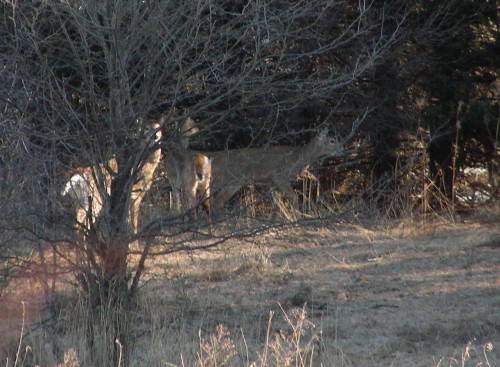|
|
THIS WEEK |
THIS SPRING |
2007 TOTAL |
SITE TOTAL |
|
# birds (and species) banded |
-- |
-- |
41 (8) |
9359 (96) |
|
# birds (and species) repeat |
-- |
-- |
12 (3) |
1561 (52) |
|
# birds (and species) return |
-- |
-- |
4 (2) |
204 (26) |
|
# species observed |
36 |
36 |
43 |
180 |
|
# net hours |
-- |
-- |
37.0 |
14059.8 |
|
# birds banded / 100 net hours |
-- |
-- |
110.8 |
66.5 |
|
|
Note: table does not include nocturnal banding (owls) |
Bander-in-charge:
Marie-Anne Hudson
Assistants: Jean Beaudrault, Shawn Craik, Jean Demers, Barbara
Frei, Gay Gruner, Barbara MacDuff, Betsy McFarlane, Clémence Soulard
Notes:
With the end of the winter season, comes the
beginning of the Spring Migration Monitoring Program (SMMP) at MBO! Our
spring season is defined as the 10-week span from March 28 through June
5, with banding occurring daily from April 18 to June 2. A few bouts of
non-standard banding will likely occur before then, however, as we set
the nets up in anticipation of our “real” banding start.
Our first week of SMMP censuses was quite lovely, as
temperatures were relatively warm and the sun shone brightly. We
haven’t yet run our seasonal spring clean-up, opting instead to wait a
few days until these few rainy days clear up a little. There is much
work to do done: hauling some leftover research equipment out of the
woods before the vines overtake it (again), cleaning out the cabin and
putting up our newly-donated corkboard (thanks to Elise and Rodger
Titman), re-gravelling some of the trails for safe passage, and trimming
the census path and net lanes are just a few items on our agenda.
The birds have
already been streaming in over the past week, with new species added to
the yearly checklist almost daily. Tuesday was the best day, with 28
species recorded on census, including 3 new arrivals for 2007 –
Green-winged Teal, Purple Finch, and Golden-crowned Kinglet. It’s been
a mix of “spring” and “winter” birds, with Red-winged Blackbirds and
Killdeer commingling with American Tree Sparrow and Slate-colored
Juncos. At least three Eastern Phoebes have already been on territory
for a few days, and Song Sparrow and Red-winged Blackbird numbers have
tripled from earlier in the week. Waterfowl have dominated this week,
with thousands of Canada Geese milling about in the field to the east of
MBO. A very special note: our neck-banded Canada Goose, H1F1, is back
at Stoneycroft for a second year! We hope he/she will stick around to
breed. In addition to the geese, we’ve seen Green-winged Teal, Wood
Duck, Northern Pintail, Common and Hooded Merganser, American Black Duck
and oodles of Mallards. The total of 36 species observed this week is
very similar to last spring's first week tally of 37, although some of
the species on the list have changed. Of these week's
observations, 12 species were new additions to our 2007 list… and there
are many more to come!
|
#
individuals banded |
mean #
individuals observed daily |
|
- |
Canada
Goose (1098.9) |
|
- |
Red-winged Blackbird (47.1) |
|
- |
American Crow (17.3) |
|
- |
Ring-billed Gull (16.9) |
|
- |
Mallard
and American Robin (13.3) |
|
- |
Blue
Jay (10.0) |
|
- |
Song
Sparrow (7.0) |
|
- |
Black-capped Chickadee (6.4) |
|
- |
European Starling (5.0) |
|
- |
Slate-colored Junco (4.4) |
|
|

While there were signs of deer activity at MBO throughout the
winter, these three are the first actually seen in a good
while. Actually, two were seen earlier that morning in the
field east of MBO, but they weren’t as photogenic. These three
were quietly picking their way along the cedar row when they
first noticed Marie-Anne rounding the corner at F while on
census. Needless to say, they didn’t stick around much longer,
opting instead to bound along the old census path that cuts
through the conifer grove and into the field. (Photo by
Marie-Anne Hudson) |


